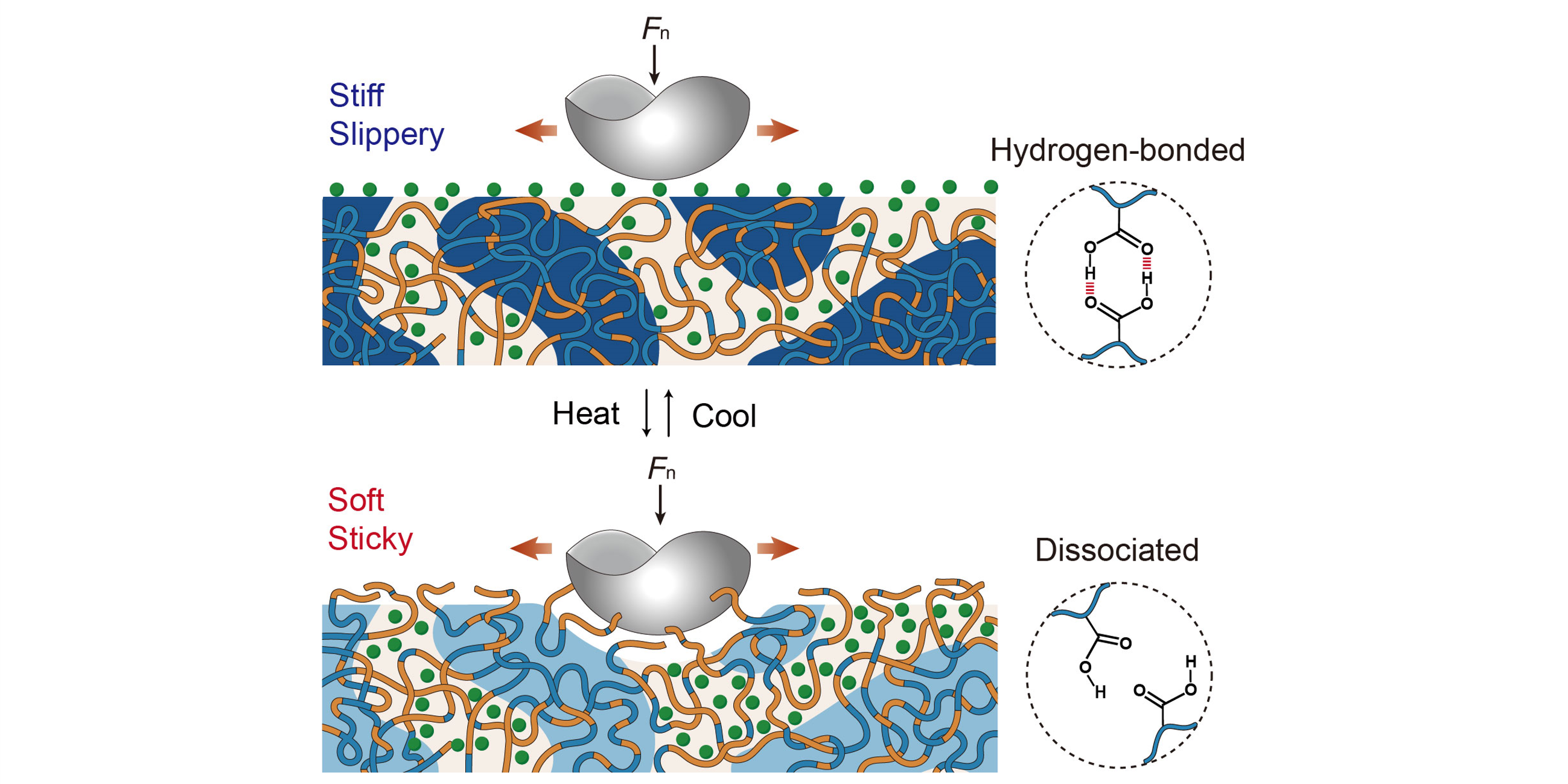Making Sticky-Slippery Switchable Fluorogels Through Self-Adaptive Bicontinuous Phase Separation
Citation
Xiaoxia Li, Baohu Wu, Shengtong Sun*, and Peiyi Wu*. Making Sticky-Slippery Switchable Fluorogels Through Self-Adaptive Bicontinuous Phase Separation. Adv. Mater. 2024, 36, 2411273.
Abatract
Developing gel materials with tunable frictional properties is crucial for applications in soft robotics, anti-fouling, and joint protection. However, achieving reversible switching between extreme sticky and slippery states remains a formidable challenge due to the opposing requirements for energy dissipation on gel surfaces. Herein, a self-adaptive bicontinuous fluorogel is introduced that decouples lubrication and adhesion at varying temperatures. The phase-separated fluorogel comprises a soft fluorinated lubricating phase and a stiff yet thermal-responsive load-bearing phase. At ambient temperature, the fluorogel exhibits a highly slippery surface owing to a low-energy-dissipating lubricating layer, demonstrating an ultralow friction coefficient of 0.004. Upon heating, the fluorogel transitions into a highly dissipating state via hydrogen bond dissociation, concurrently releasing adhesive dangling chains to make the surface highly sticky with an adhesion strength of ≈362 kPa. This approach provides a promising foundation for creating advanced adaptive materials with on-demand self-adhesive and self-lubricating capabilities.


